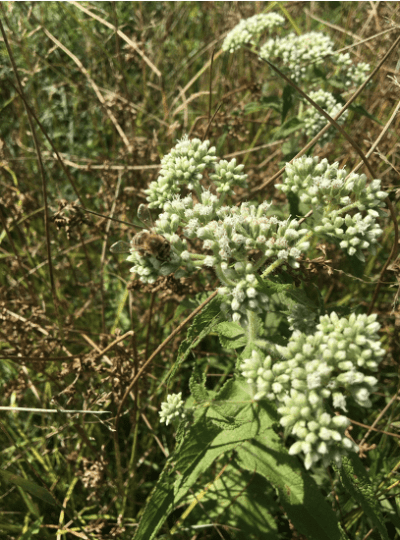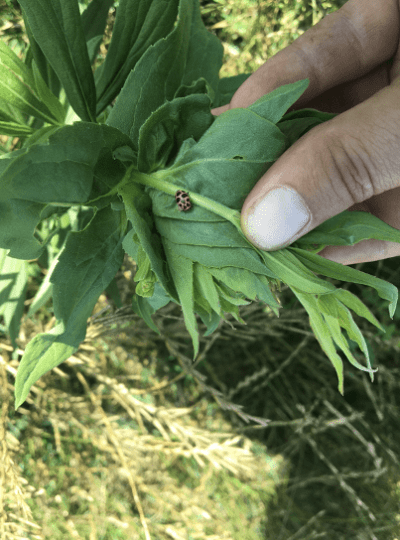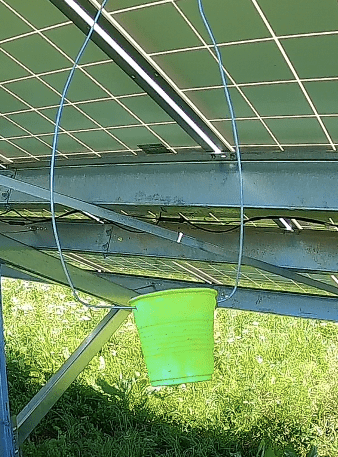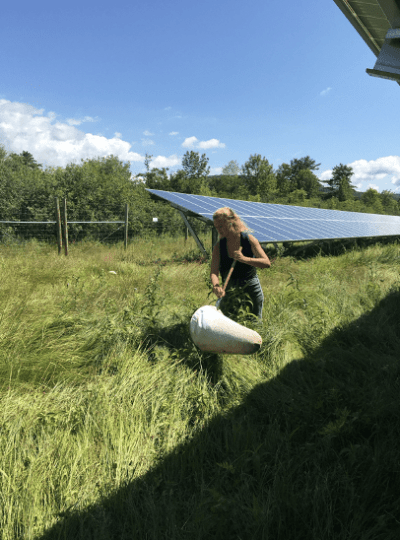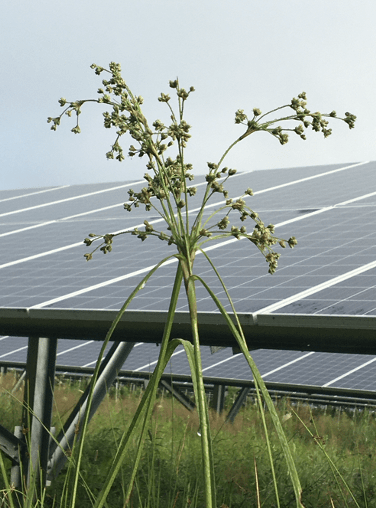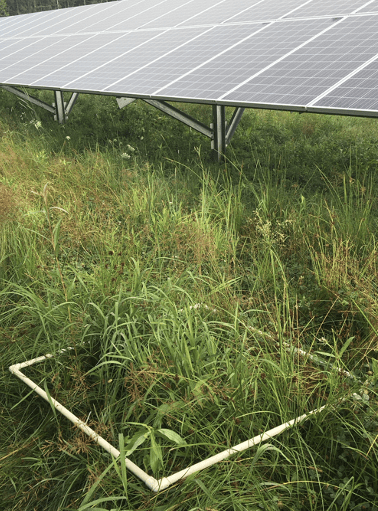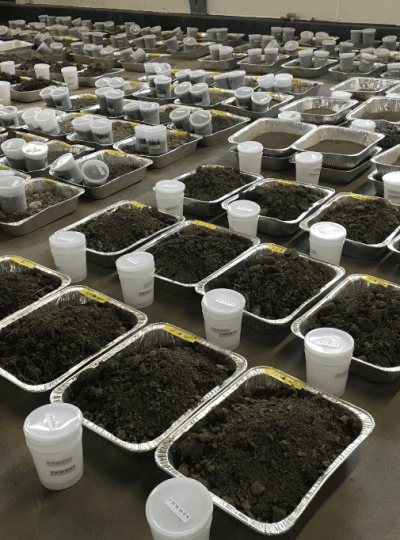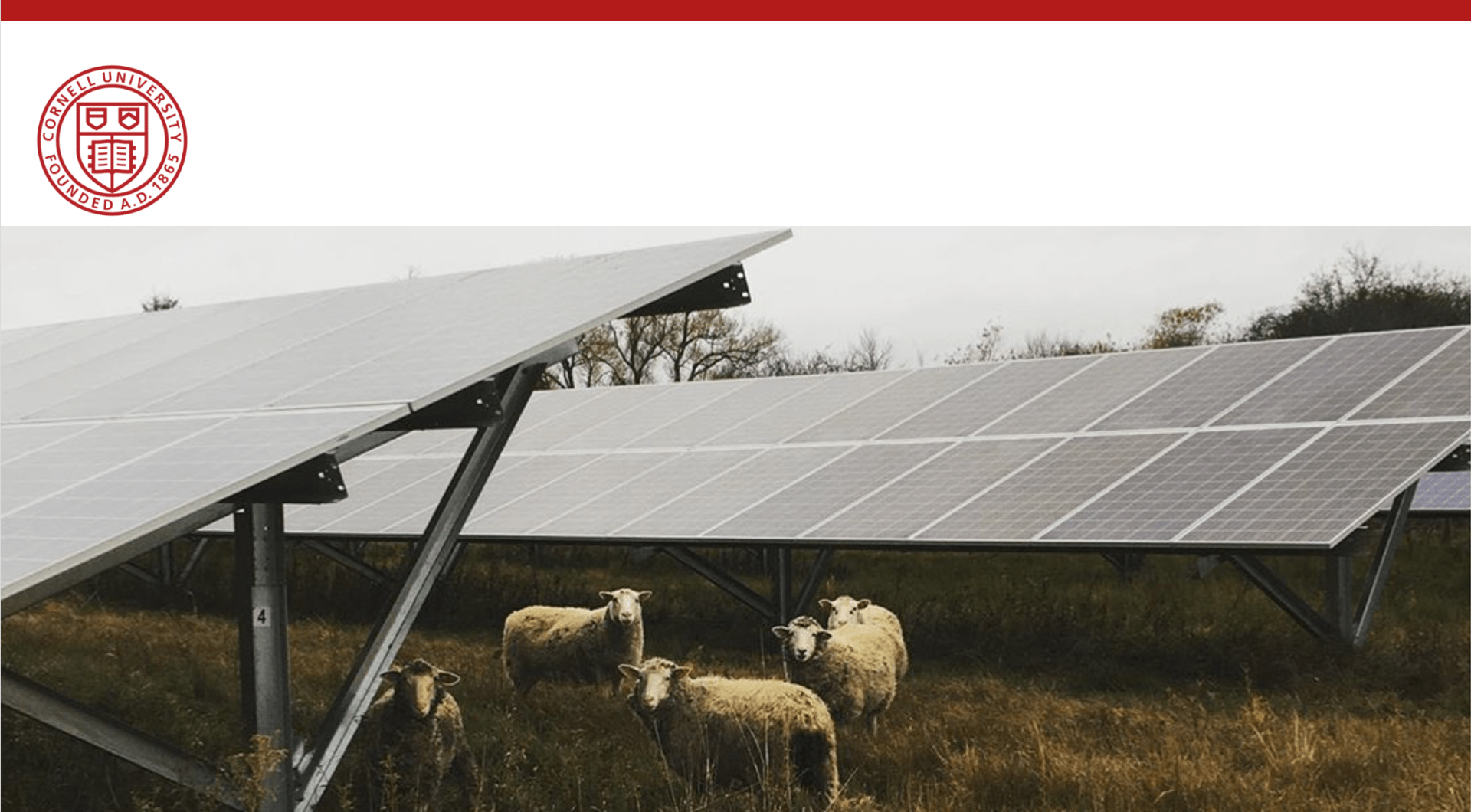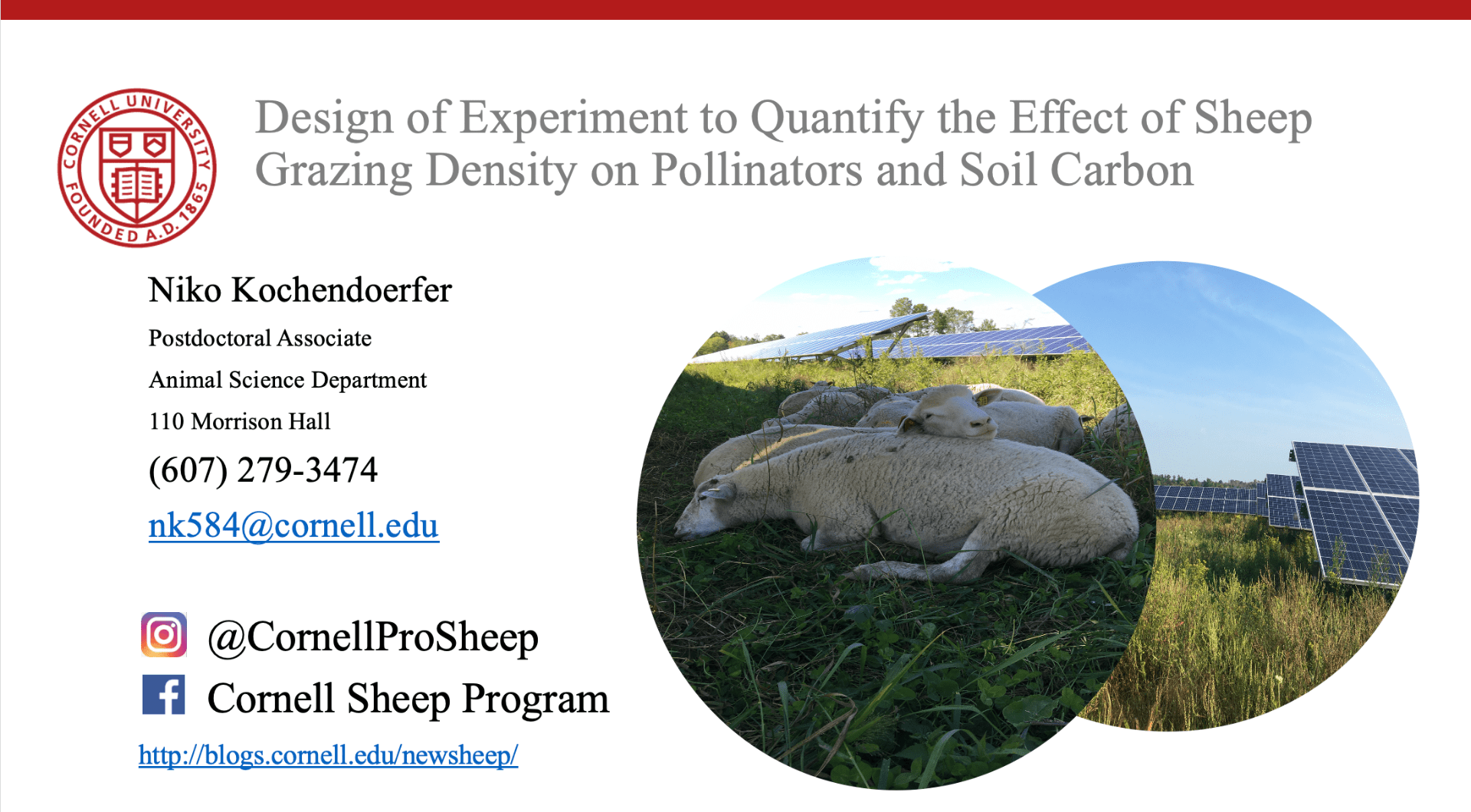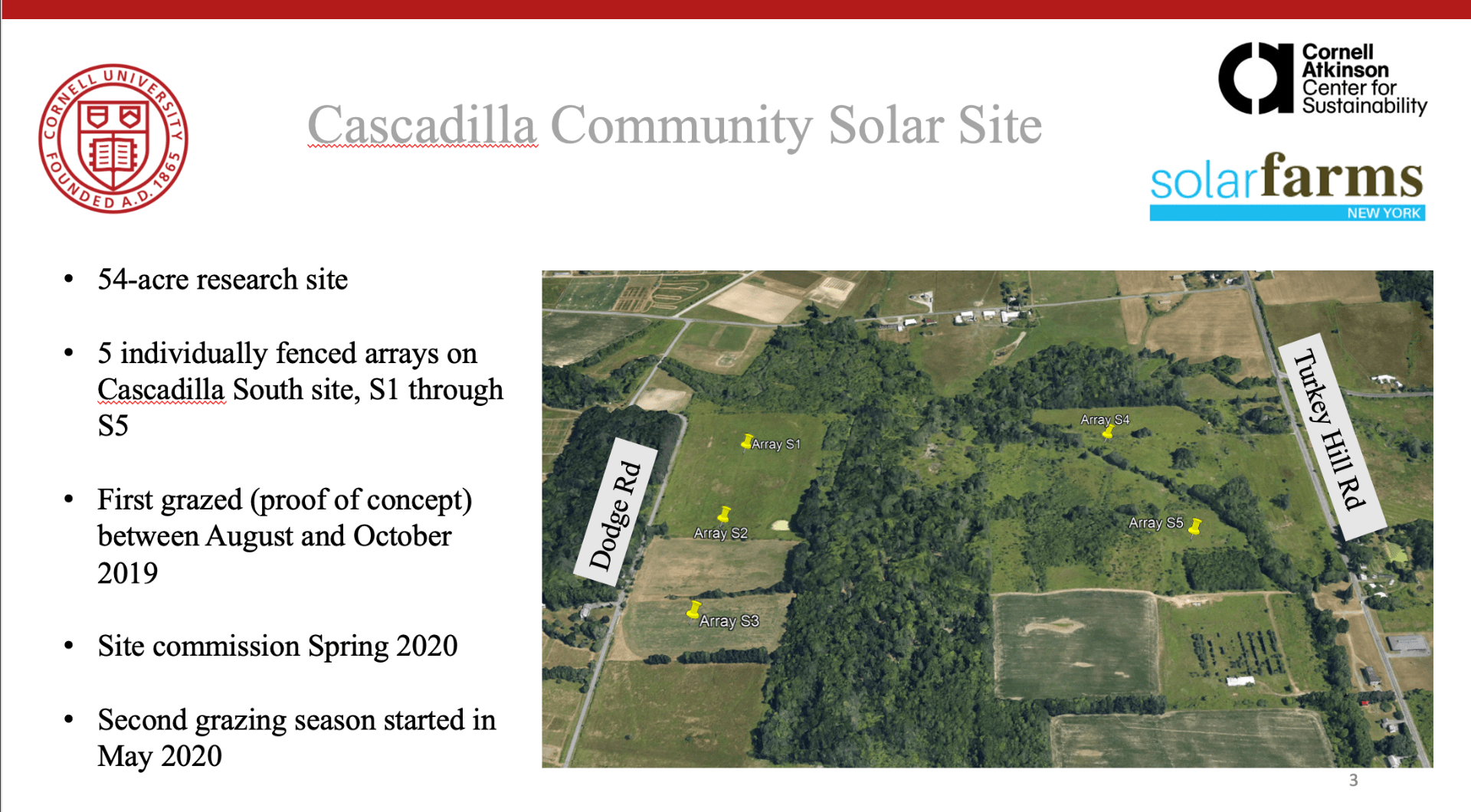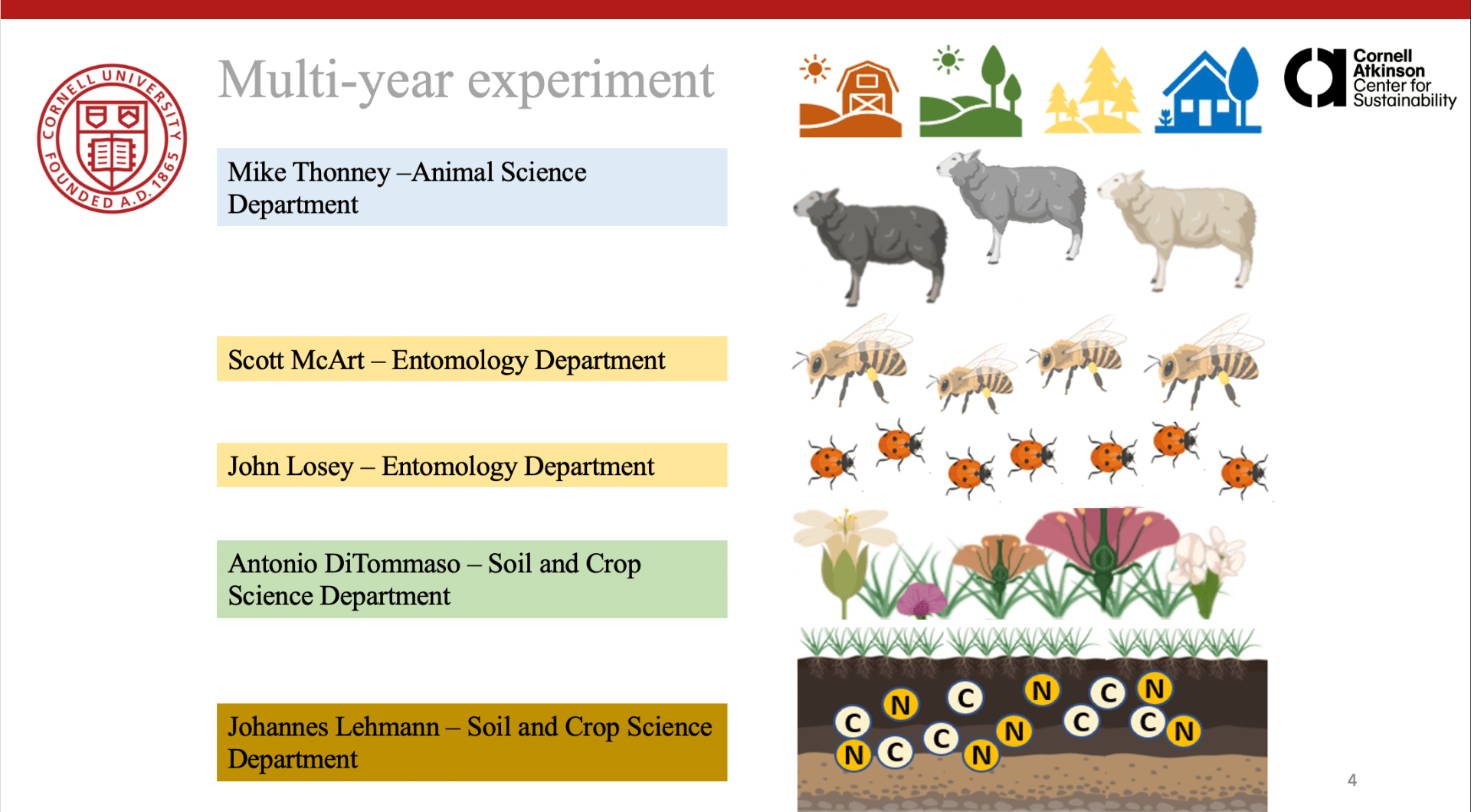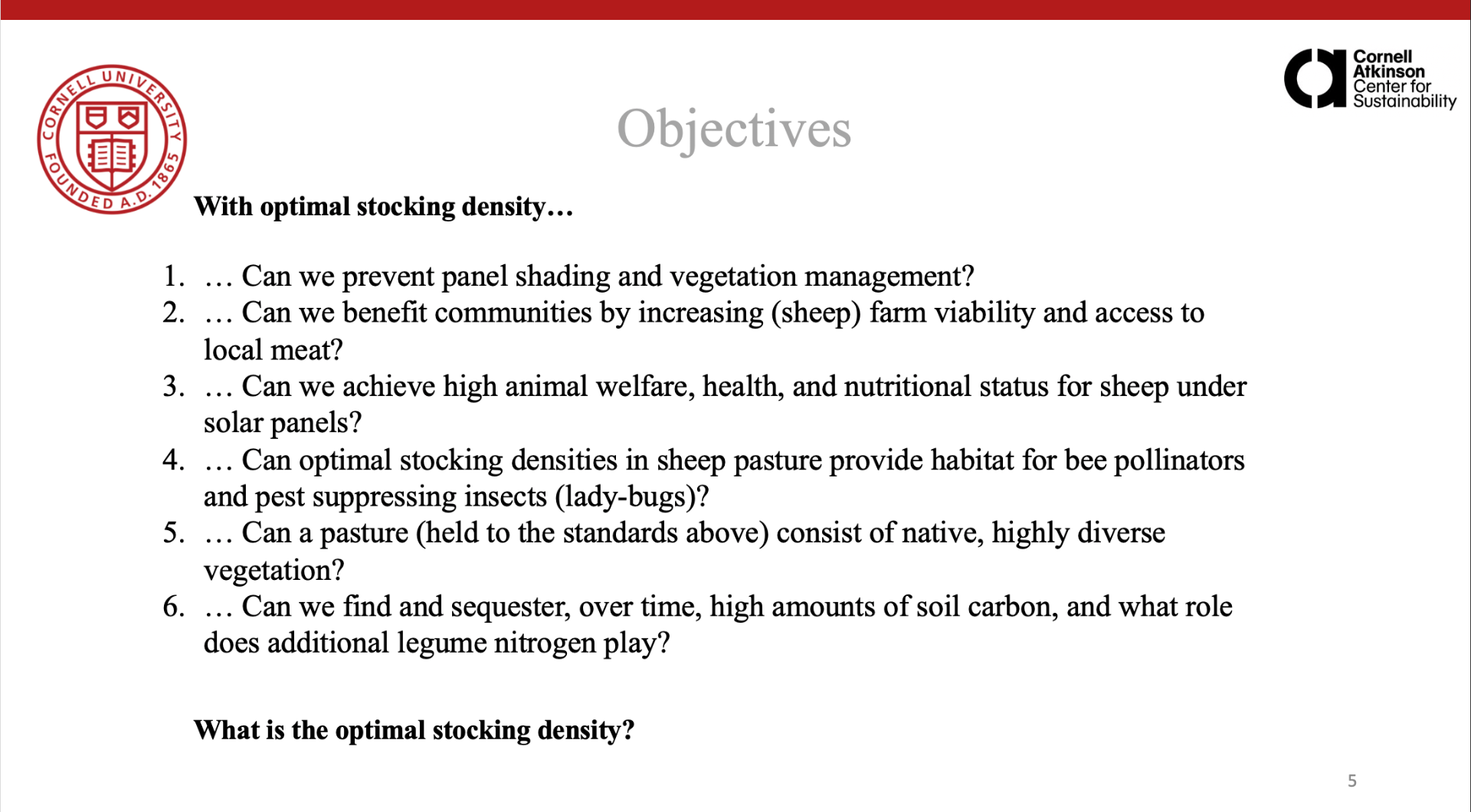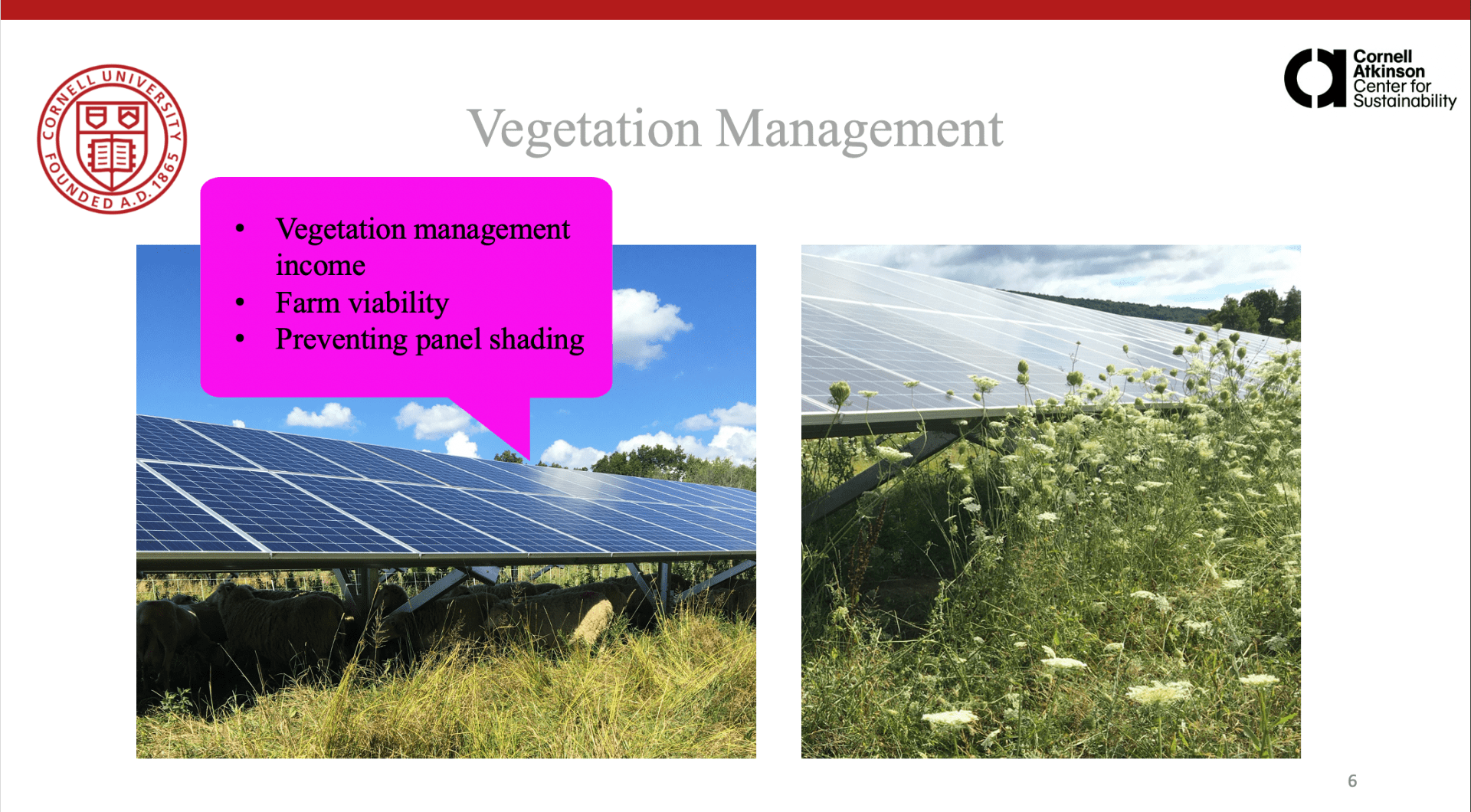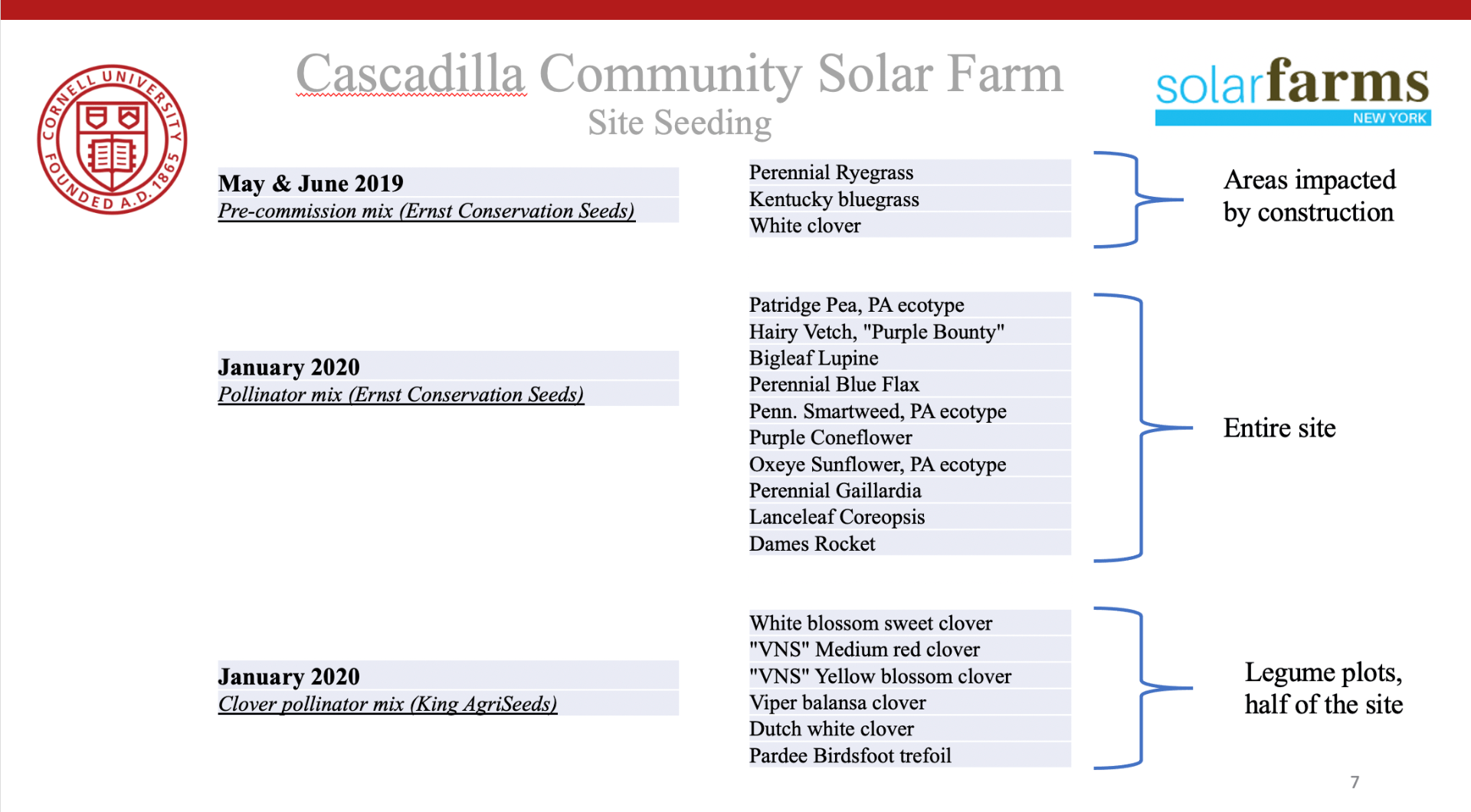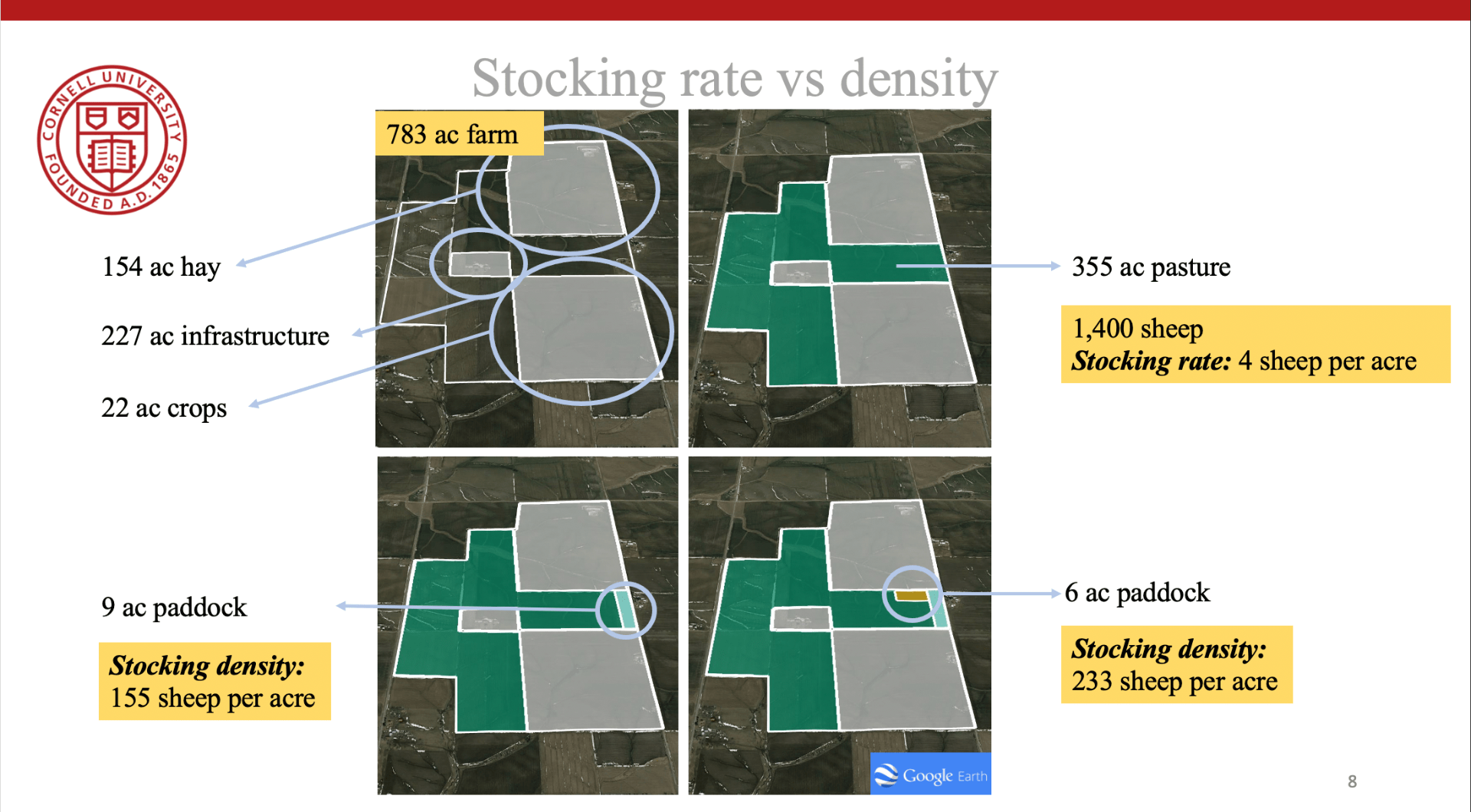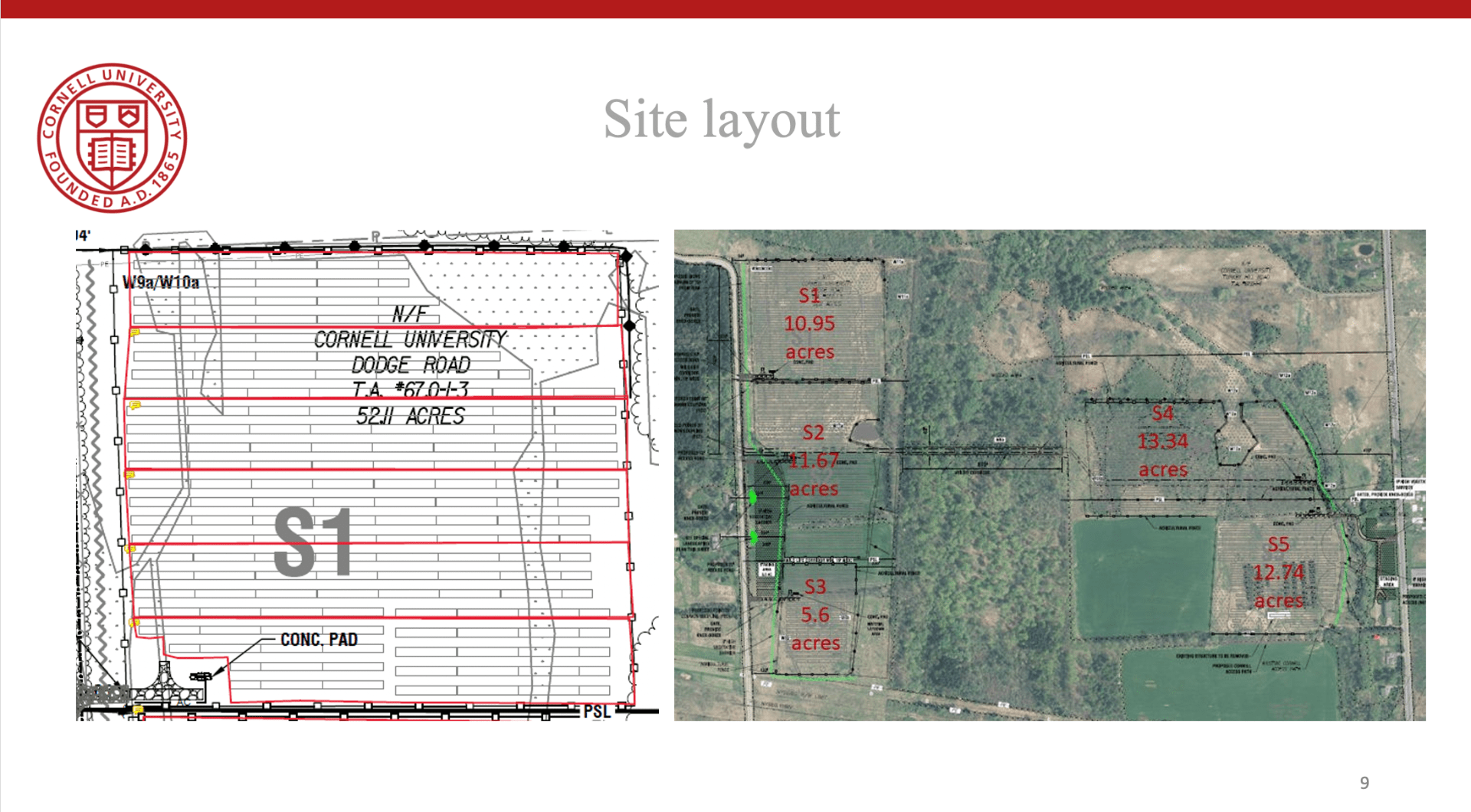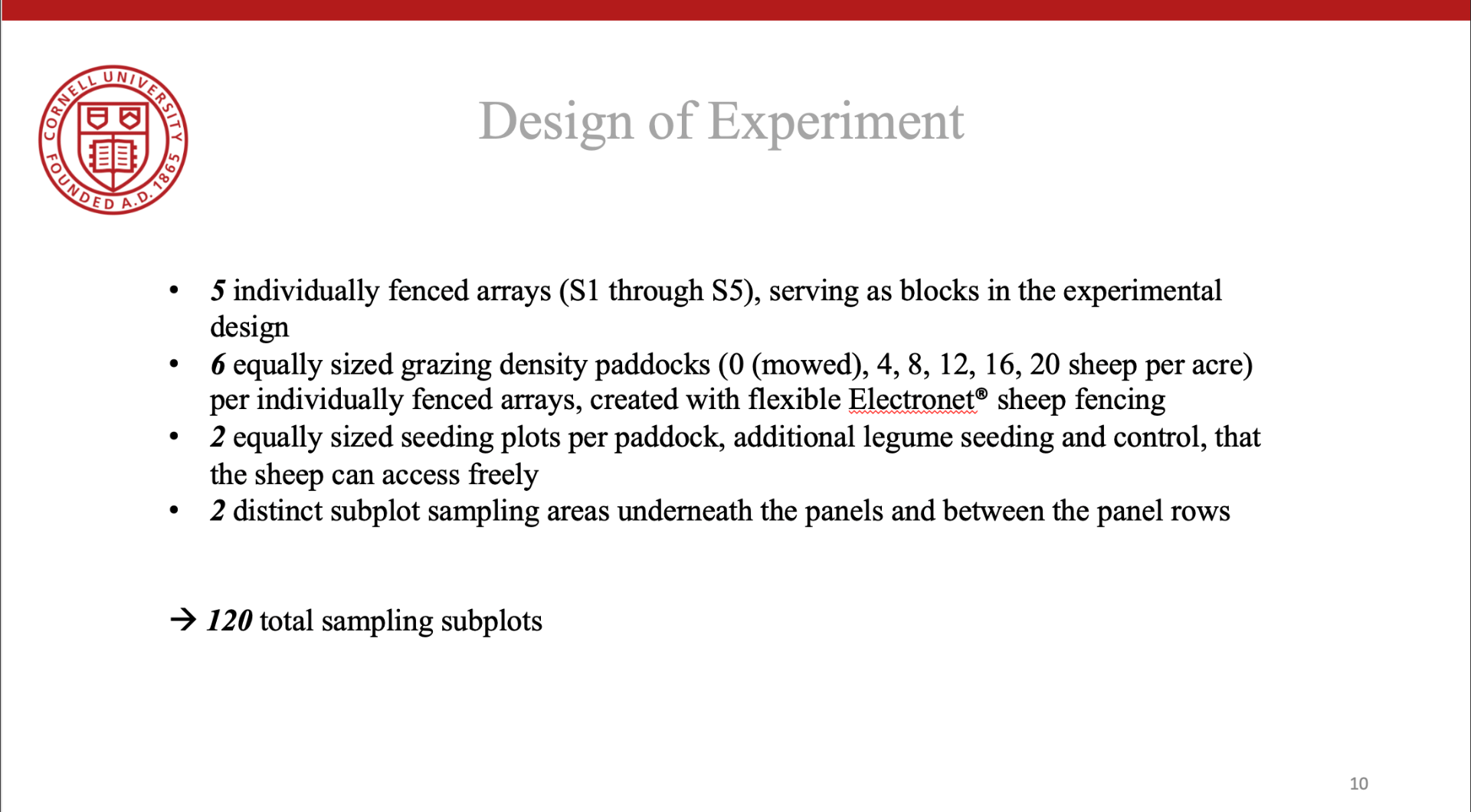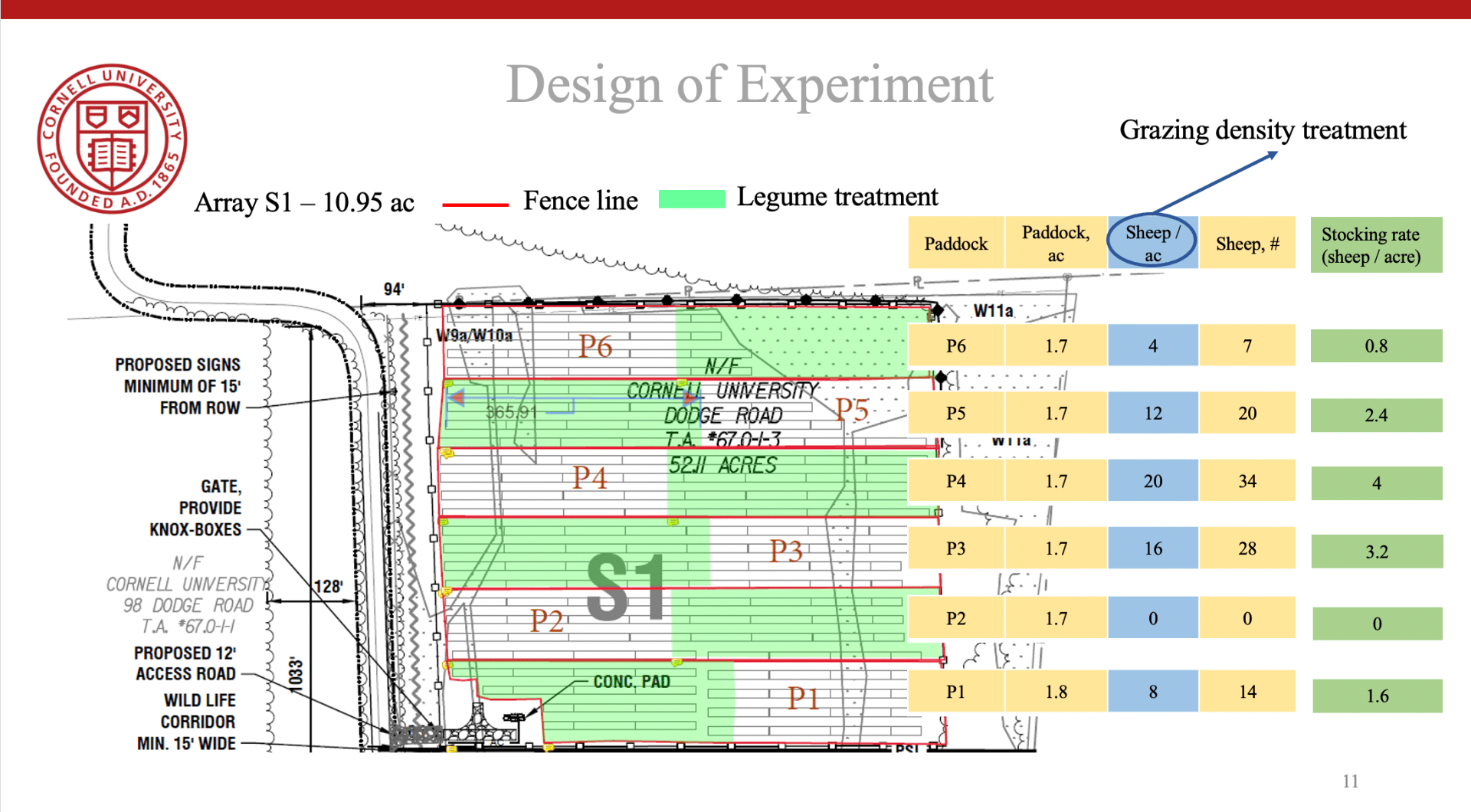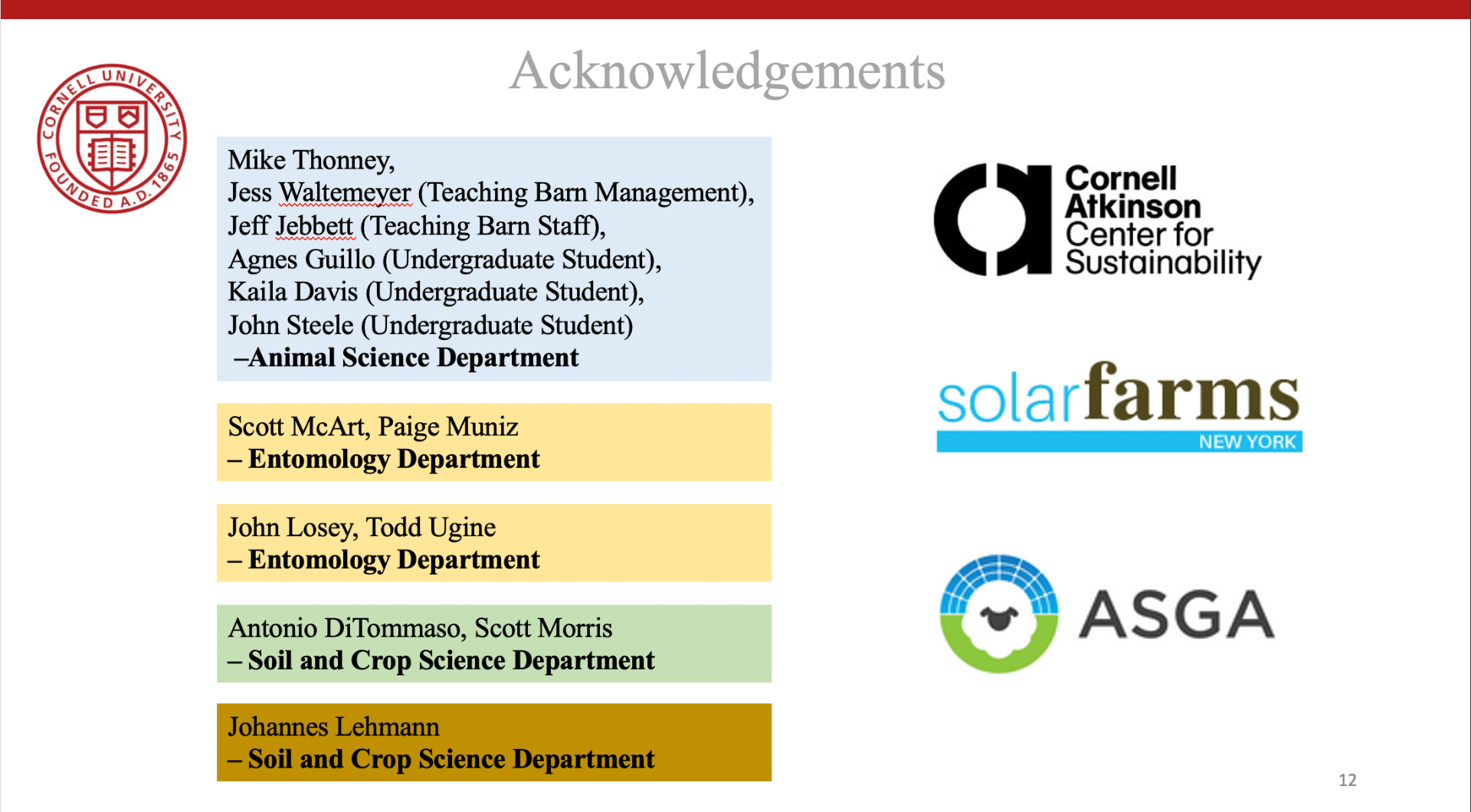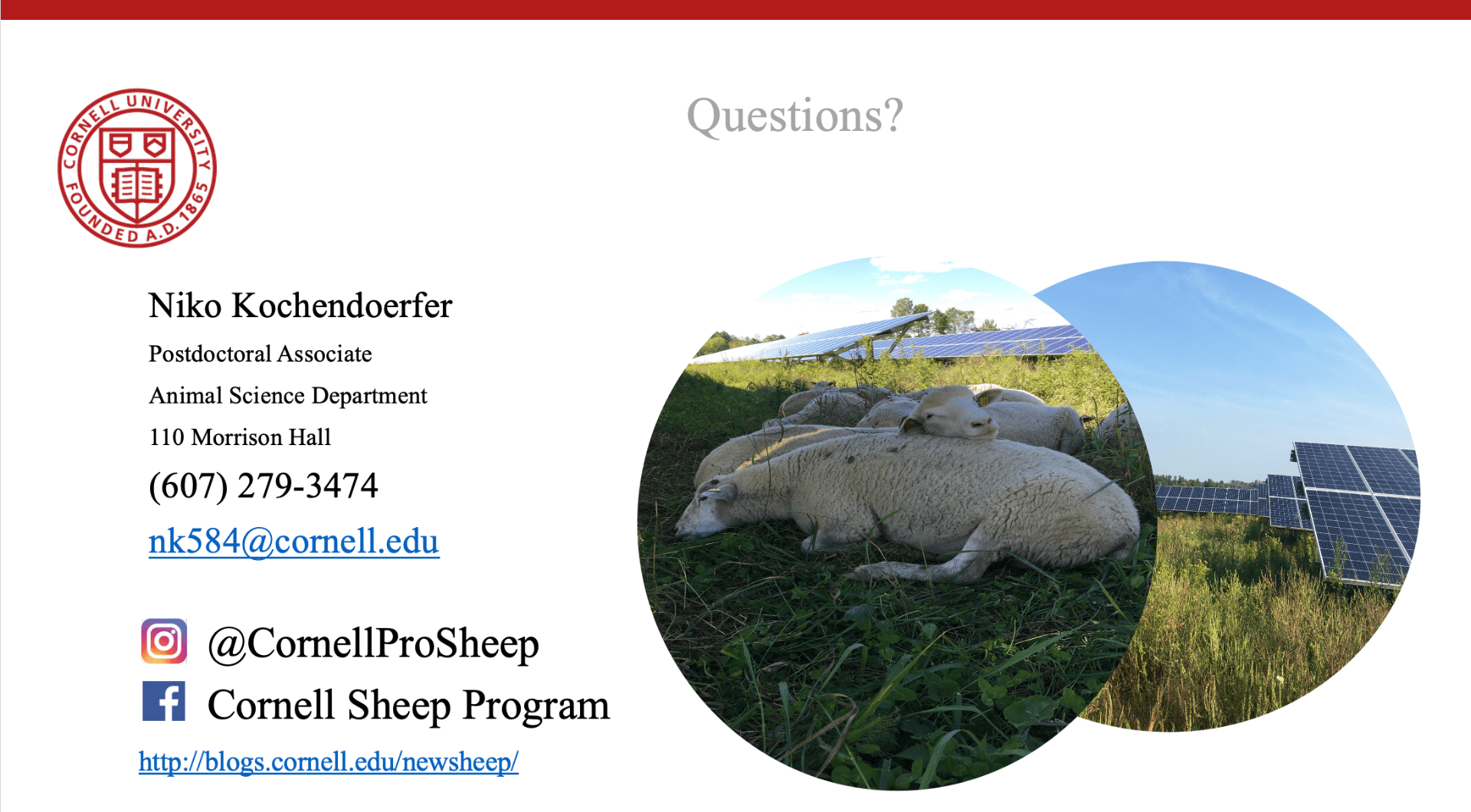Grazing Sheep on Solar Array Sites to Optimize Pollinator Plant Species and Sequester Soil Carbon
In August 2019, sheep from the Cornell University Sheep Program flock started grazing the 54-acre South arrays of the Cascadilla Community Solar Site (a Solar Farms NY project), located between Dodge and Turkey Hill Roads, on Cornell land near the main Ithaca campus. Grazing proof of concept was achieved in 2019, and the official solar grazing trial funded by the Cornell University Atkinson Center for Sustainability, started in May 2020.
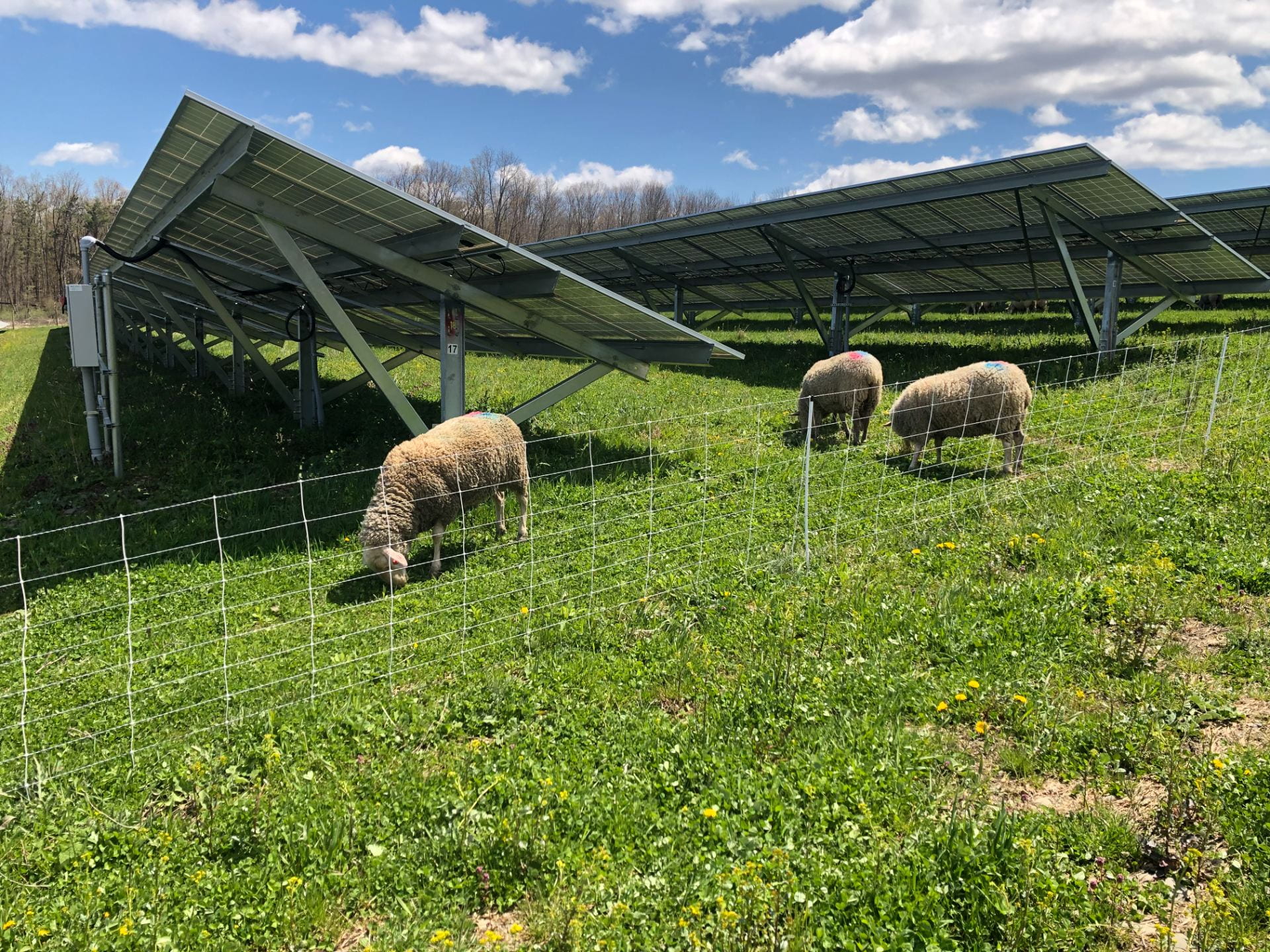
This project was catalyzed by the 2019 New York Green New Deal which announced doubling the distribution of solar resources throughout the state by 2025 [1], and the grazing contract that was negotiated between the Cornell University Sheep Program and the project O&M firm in April 2020, facilitated by the Cornell University Office for Sustainability.
With a total of 86,200 acres already under panels (on in the pipeline) in New York [2, 3], land-use competition with agriculture creates friction between the agricultural community and solar developers [4, 5, 6]. Grazing sheep could be a meaningful compromise, with land remaining in agricultural production while maintaining or improving soil health and productivity. Researchers at Cornell aim to optimize the co-location of grazing livestock on such solar arrays to maintain agricultural productivity and prevent panel shading, and to collaborate at the intersection of agriculture, pollinator habitat support, and climate change risk mitigation. Preliminary observations from other studies show that rotationally grazed pastures attract a sizeable number of bees and other pollinators. Additionally, rotational grazing management is likely to enhance soil health and increase soil carbon sequestration.
This multi-year research project is a collaborative effort among five Cornell University research groups and centers the aim for radical collaborations to solve issues related to agriculture, climate change, habitat decline, and land-use changes:
- Niko Kochendoerfer and Mike Thonney, Animal Science, Small Ruminant Nutrition and Management
- Johannes Lehmann, School of Integrative Plant Science Soil and Crop Sciences Section, Biogeochemistry
- Scott McArt, Entomology, Bee Pollinators of Conservation Concern
- John Losey, Entomology, Pest-Suppressing Insects, Ladybugs
- Antonio DiTommaso, School of Integrative Plant Science Soil and Crop Sciences Section, Weed Science
In this project, up to 124 sheep are grazed rotationally among the arrays at stocking densities of 0 (mowed control), 4, 8, 12, 16, and 20 sheep per acre to determine the optimal number of sheep per acre in a rotational grazing system. This will help to establish best grazing practices and uncover underlying scientific concepts relating sheep grazing density to pollinator species richness and abundance, vegetation biodiversity, and soil carbon sequestration. The collaboration aims to find optimal stocking rates and densities to:
- Prevent panel shading and ensure optimal vegetation management.
- Benefit communities by increasing (sheep) farm viability and access to local meat.
- Achieve high animal welfare, health, and nutritional status for sheep under solar panels.
- Provide habitat for bee pollinators of conservation concern and pest suppressing insects (ladybugs).
- Maintain highly diverse vegetation with high proportions of native vegetation.
- Accrue and sequester, over time, high amounts of soil carbon, and understand whether additional nitrogen from legumes helps.
The design of the grazing trial allows for 120 subplots for sample collection across 5 individually fenced arrays that serve as experimental blocks and guarantee a high-powered data analysis.
Preliminary findings after the first season of sample collection suggest that:
- Animal health and welfare was excellent, with intestinal parasite FAMACHA scores of 1.5 [7] and body condition scores of 3.5 [8] and shade and shelter continuously available under panels.
- Conception rates were high with 82.5%, and a total of 186 lambs sold ($33,480) from ewes bred and grazed on-site providing access to locally produced meat, 47 ewe lambs were retained as replacement ewes.
- Highly biodiverse pastures (170 species counted) were maintained with sheep grazing.
References




